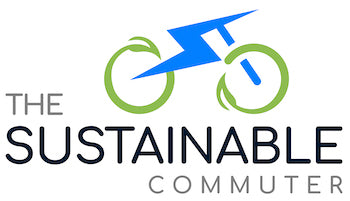
Make Transportation More Sustainable: Promote Electric Vehicles
Share
Sustainable Transportation: Promoting Electric Vehicles (EVs)
Sustainable transportation is a crucial aspect of building a greener and more environmentally friendly future. It refers to the means of transportation and infrastructure that are designed to have a minimal impact on the environment, conserve energy, and promote long-term sustainability. With the growing concerns over climate change and the depletion of fossil fuels, it is imperative that we shift towards more sustainable transportation options. In this blog post, we will explore some strategies to make transportation more sustainable, with a particular focus on promoting electric vehicles (EVs).
Electric Vehicles (EVs): A Viable Way to Make Transportation More Sustainable
One of the most promising solutions to reducing greenhouse gas emissions and promoting sustainable transportation is the adoption of electric vehicles (EVs). EVs are powered by rechargeable batteries and do not produce tailpipe emissions. They have the potential to significantly reduce the carbon footprint of transportation and help mitigate climate change.
Benefits of EVs:
- EVs produce zero tailpipe emissions, which means they do not contribute to air pollution or greenhouse gas emissions. This is especially important in heavily urbanized areas where air quality is a major concern.
- EVs are more energy-efficient compared to conventional internal combustion engine vehicles.
- EVs have lower maintenance costs compared to conventional vehicles.
Challenges of EVs:
- The limited availability of charging infrastructure.
- The limited range of EVs compared to conventional vehicles.
Public Transportation Enhancement
In addition to promoting EVs, enhancing public transportation is another crucial aspect of making transportation more sustainable. Public transportation, such as buses and trains, can significantly reduce the number of individual vehicles on the road, leading to reduced congestion and lower emissions.
Strategies to Improve and Expand Public Transportation:
- Increased investment in public transportation infrastructure.
- Efforts to improve the frequency and reliability of public transportation services.
Benefits of Public Transportation:
- Reduces traffic congestion and fuel consumption.
- Reduces air pollution and improves air quality.
Carpooling and Ride-sharing
Carpooling and ride-sharing are additional strategies to make transportation more sustainable. These initiatives involve sharing a vehicle with others who are traveling in the same direction or to the same destination.
Benefits of Carpooling and Ride-sharing:
- Reduces the number of vehicles on the road, leading to reduced congestion and lower emissions.
- Reduces travel costs for individuals.
Examples of Companies Facilitating Carpooling and Ride-sharing:
- Uber
- Lyft
Financial Organizations Supporting Sustainable Transportation
Financial organizations play a crucial role in supporting sustainable transportation initiatives. They provide funding and support to projects that promote the adoption of electric vehicles, enhance public transportation, and encourage carpooling and ride-sharing.
Examples of Financial Organizations Supporting Sustainable Transportation:
- Green Investment Bank (United Kingdom)
- Clean Energy Finance Corporation (United States)
In conclusion, making transportation more sustainable is crucial for mitigating climate change and promoting a greener future. Electric vehicles, public transportation enhancement, carpooling, and ride-sharing are all viable strategies to achieve this goal. By adopting these measures and receiving support from financial organizations, we can make significant progress towards sustainable transportation. It is essential for individuals, communities, and governments to take the necessary steps to transition to more sustainable transportation options and build a more environmentally friendly future.
